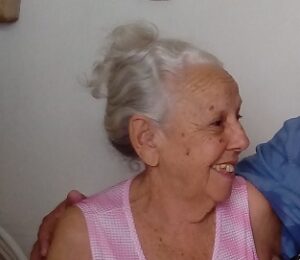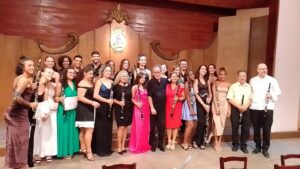The choreographic art of Nora «Chiquitica» Hernández.


Choreographer Nora Hernández González is celebrating her birthday and is being honoured by UNEAC, of which she has been a member since its founding years in the 1960s.
Chiquitica, as she has always been known, has the merit of exposing to the light the dance hidden in plots and yards, in huts and fields, in homes and schools, where the natural talent of Matanzas is sheltered.
With her cheerful character and a great sense of responsibility, she opened the way in community cultural centres and also in large halls to the cultivators of the rumba and the bearers of the purest African traditions; to the lovers of the zapateo, the caringa and the son; in addition to modern tendencies incorporated into the groups that emerged in towns and cities, as a response to the cultural policy of the Revolution.
Her testimony shows a life devoted to the act of promoting art among the people. The first thing she declares is her gratitude:
«To an intellectual who motivated me to become a dance instructor, to Pedro Esquerré Pujol. He introduced me to this profession on the Sauto stage».
She was the first choreographer of the zarzuelas staged by the former Grupo Lírico de Matanzas and at the same time achieved, with her artistic mastery, a multifaceted work in the combination of her knowledge.
«At the request of Rogelio Martínez Furé, Argelier León, Miguel Barnet and María Teresa Linares, I was assigned the task of taking the 18 groups that played and danced in the houses of culture of the municipalities to the houses of culture of the province, with an incalculable cultural richness.
«I was also the founder of the 20th Anniversary Brigade of Art Instructors, which worked mainly in the Plan for Schools in the Countryside, in Jagüey Grande.
«I also worked with the professional groups Papalote, with the maestro René Fernández, winner of the National Theatre Award; with Teatro D’ ‘Sur, under the aegis of the recently deceased Pedro Vera in the well-remembered piece Réquiem por Yarini; some works with Icarón together with Miriam Muñoz and also with Danza Espiral at the request of the maestro Liliam Padrón in the creation of Cromatismo y Danza».
 The choreographic art of Nora «Chiquitica» Hernández
The choreographic art of Nora «Chiquitica» Hernández
Her skillful appreciation has been present in the choreographies of cabarets and amateur groups that have danced with grace at popular festivities for more than 60 years, because she is one of those artists who never rests, who pulsate with the people.
Chiquitica, because she was among the first in her career, participated as a delegate in the VIII World Festival of Youth and Students held in 1962 in Helsinki, the capital of Finland.
She has been a member of the jury for important events in the Cubadanzón International and in the programme Para Bailar, on Cuban Television with Cristy Domínguez and Sonia Calero.
She won the Choreography Award at festivals in Bulgaria and Poland, Gold Medal and Gold Leaf, with the work she presented together with the folkloric group Columbia del Puerto, from Cárdenas.
«I remember with great affection, she says, the tour of the Republic of Angola with the group Yaguarimú and the announcer Tany Allende, among others; we went to recreate the Cuban troops, immersed in the struggle for the liberation of that African land».
I ask her how her aesthetic knowledge has influenced the stage projection of the original groups?
«My contribution is based on creating a structure for the show they offer, to achieve a suitable dramaturgy and costumes. Without hardly touching their native dance, I oriented the Orun to make a presentation, to pass to the Orishas independently and then to define a finale, because with these public acts an artistic connotation is achieved».
 Nora Hernández arrived at her 78th birthday at her home in Calle Pavía, almost on the edge of the beautiful bay of Matanzas, where she was visited by the President of UNEAC Yumurina and colleagues from the provincial Centre for Community Culture; there were songs and poems in her honour; there were friends and colleagues who appreciate the greatness of her art and the indelible mark she has left on the cultural history of Matanzas.
Nora Hernández arrived at her 78th birthday at her home in Calle Pavía, almost on the edge of the beautiful bay of Matanzas, where she was visited by the President of UNEAC Yumurina and colleagues from the provincial Centre for Community Culture; there were songs and poems in her honour; there were friends and colleagues who appreciate the greatness of her art and the indelible mark she has left on the cultural history of Matanzas.
Written by María Elena Bayón.




